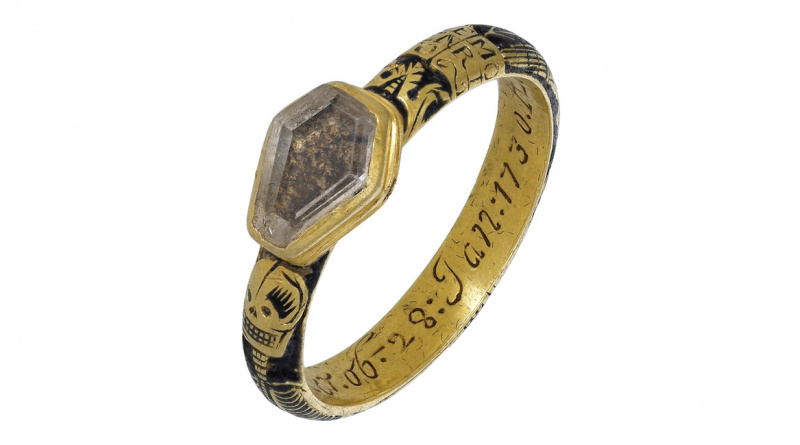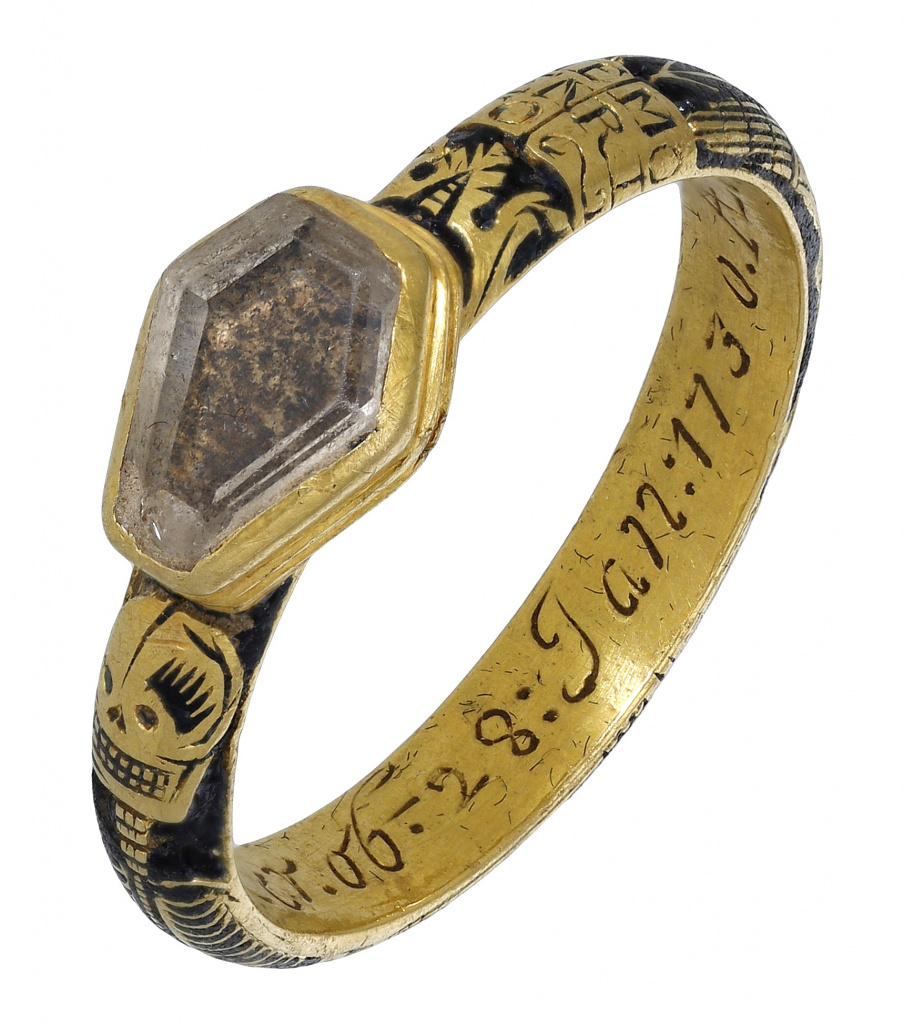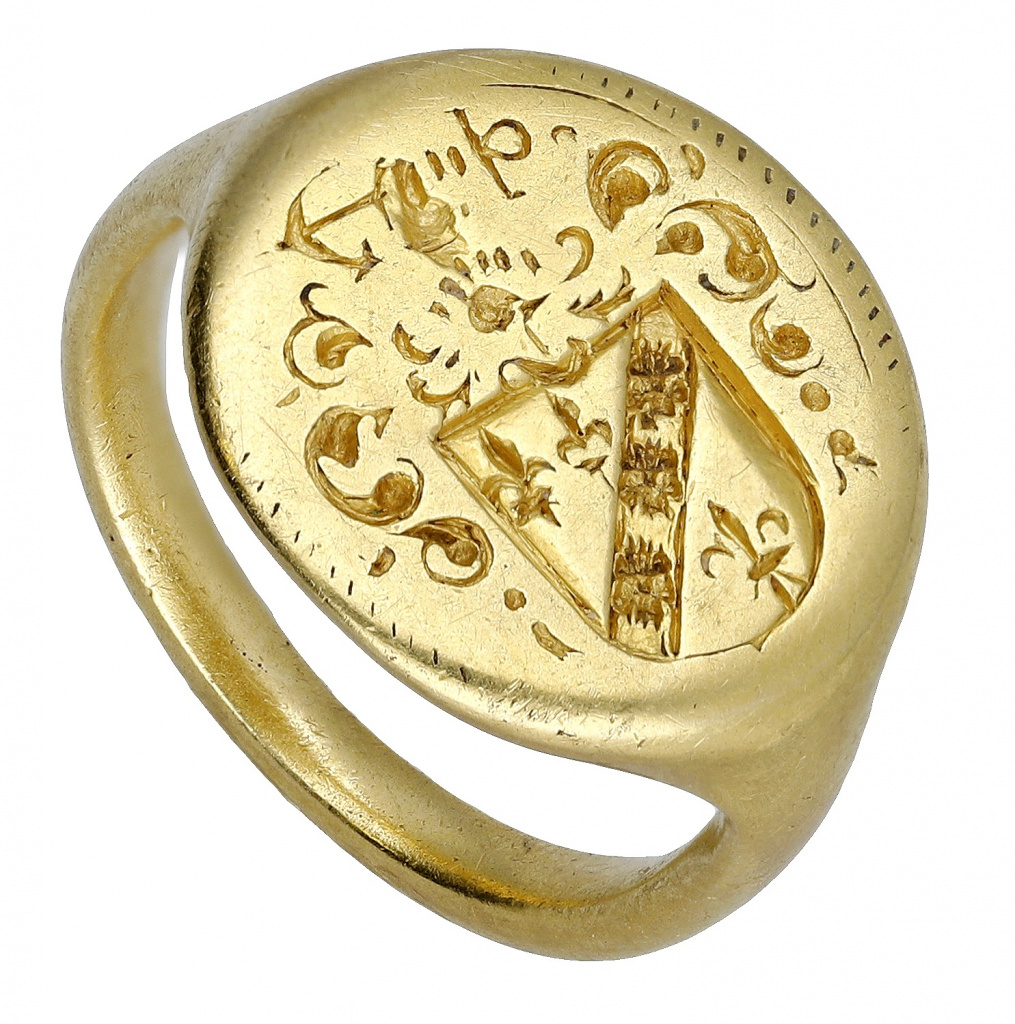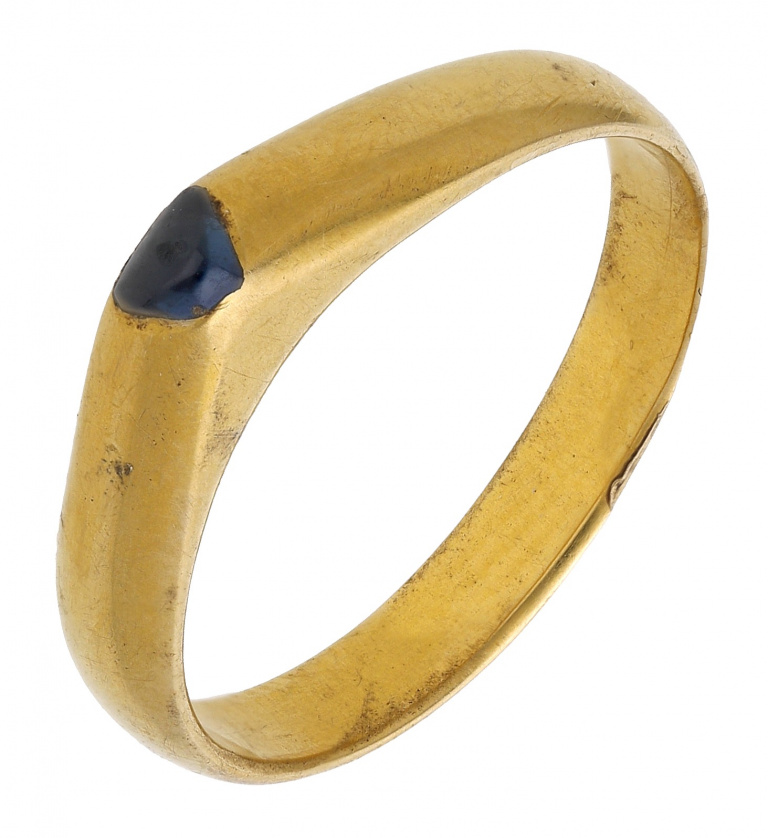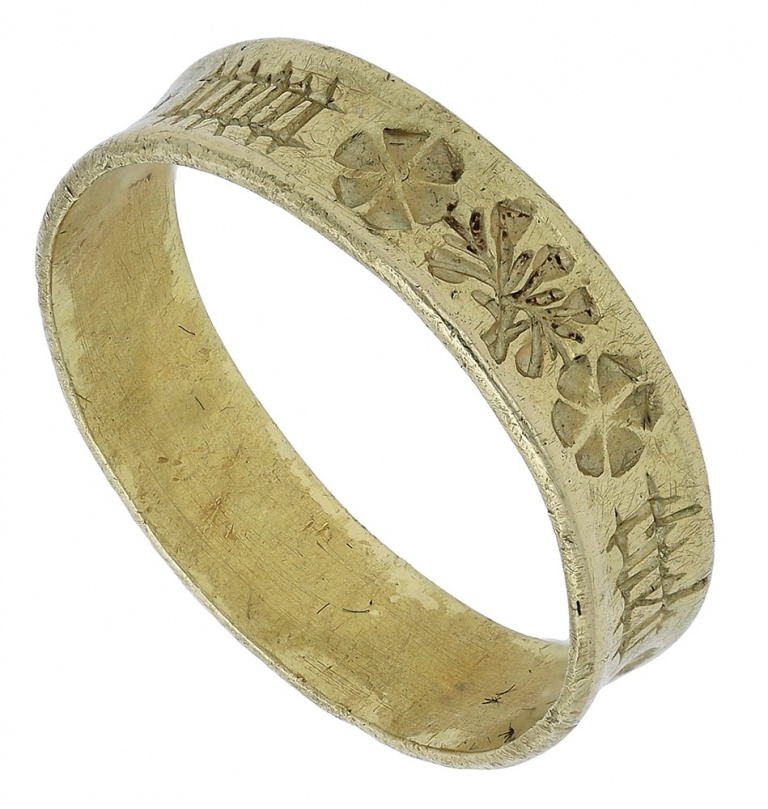Memento Mori ring smashes auction estimate
Memento Mori ring smashes auction estimate
Noonans auction of Jewellery, watches and objects of vertu on 14 March 2023 included many detecting finds. Amongst these was a memento mori ring, found last year.
To view any of my selected lots in the auction catalogue click on the lot number. The full catalogue can be found here.
There is a buyer’s premium of 24% (plus VAT) on the hammer price.
Featured finds
A gold Memento Mori ring dated 1730 which was found last year by detectorist David Nicklin.
Finding the ring
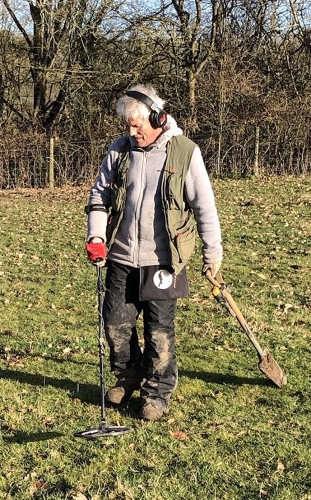
David was out detecting with a friend using his Minelab Equinox 600 on a field in the Vale of Glamorgan in late 2022. The field had been detected many times before but this time it had been deep ploughed for the first time in 40 years.
Searching around the edge of the field, David found a gold ring at a depth of about 3 to 4 inches. At first he thought it was a posy ring but, when his friend noticed that it had a black skeleton, it became apparent that it was a Memento Mori ring.
David recorded the ring with Swansea Museum but, as it is less than 300 years old, it does not qualify as Treasure.
David said: “I have found a few gold rings in the past but nothing like this one. I was over the moon although I didn’t realise its potential value. I hope that the ring sells well as my wife is wanting to buy some new carpets with the proceeds!”
Memento Mori skeletal ring
The ring features a skeleton in black enamel with an arrow pointing downwards between its legs towards the inscription that reads MEMENTO MORI over three lines.
Nigel Mills, Consultant (Coins and Antiquities) at Noonans says “The ring has a coffin shaped rock Crystal inset into the bezel and is dated on the inside 28th Jan 1730 with the name eliz tucker aged 65 and inscribed with Memento Mori which translates as ‘remember thy death’. Worn on the little finger they were a reminder to the wearer to live a life without sin as they will be held accountable in death. This was the height of fashion in the early 18th century.”
Richard McCaie unearthed this ring some 15 years ago. However, it was not a detecting find. Richard found it while planting a Caenothus bush in the garden of his Grade II listed 16th century farmhouse at a depth of 10 inches. Richard said “I was very excited when I dug up the ring. We were amazed when Noonans told us the value and we are planning to use the proceeds from the sale to help our children“
The ring was recorded at the PAS as DEV-85B7D4 and subsequently disclaimed as Treasure.
The arms on the ring are those of the Cockeram or Cokerham family of Devon and Herefordshire. The initials HC on the reverse suggest that it belonged to Humphrey Cockeram of Cullompton. Nigel Mills, artefacts and antiquities consultant at auction house Noonans, said “Humphrey was recorded as the head of the family in 1620 and lived at Hillersdon Manor in the early 17th century which is 42 miles east of where it was found. The family were great patrons of the church, and their name comes from old English ‘Coccan’ meaning dweller by the stream“

